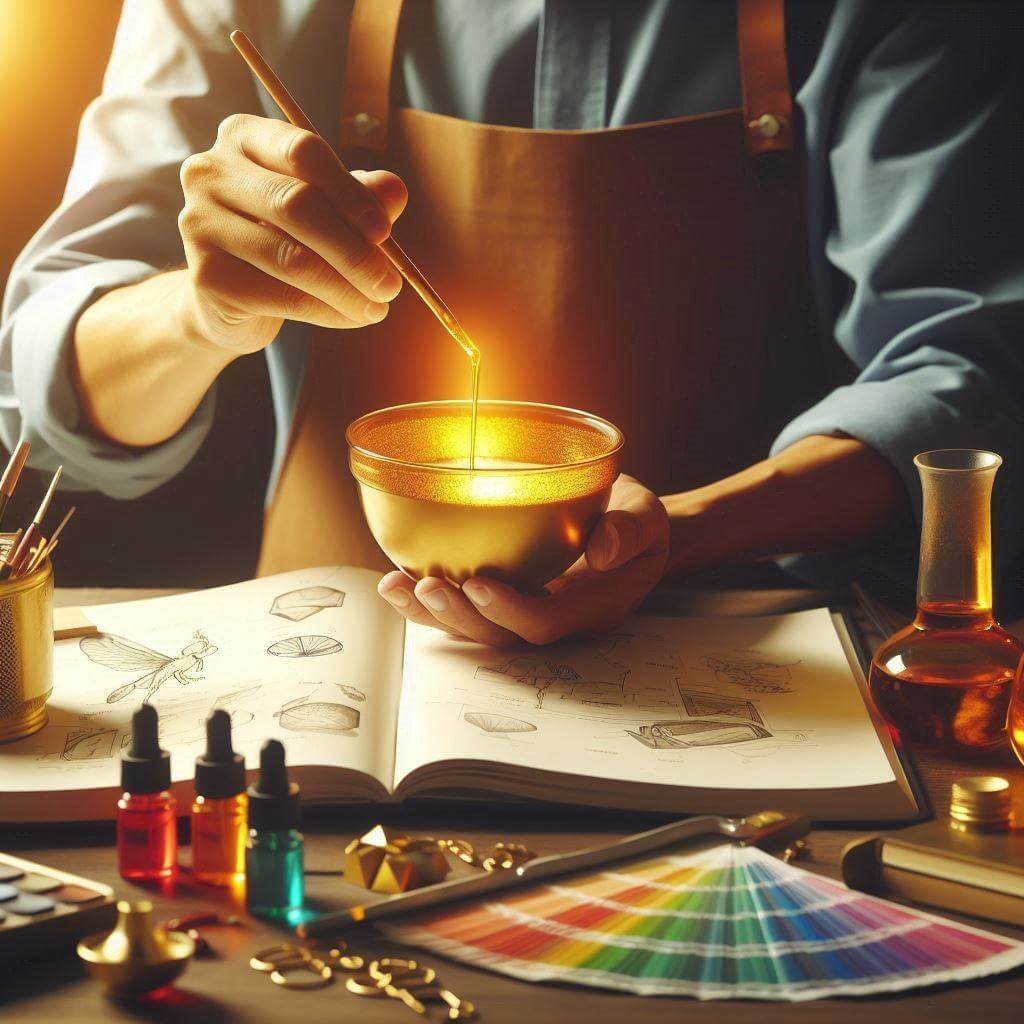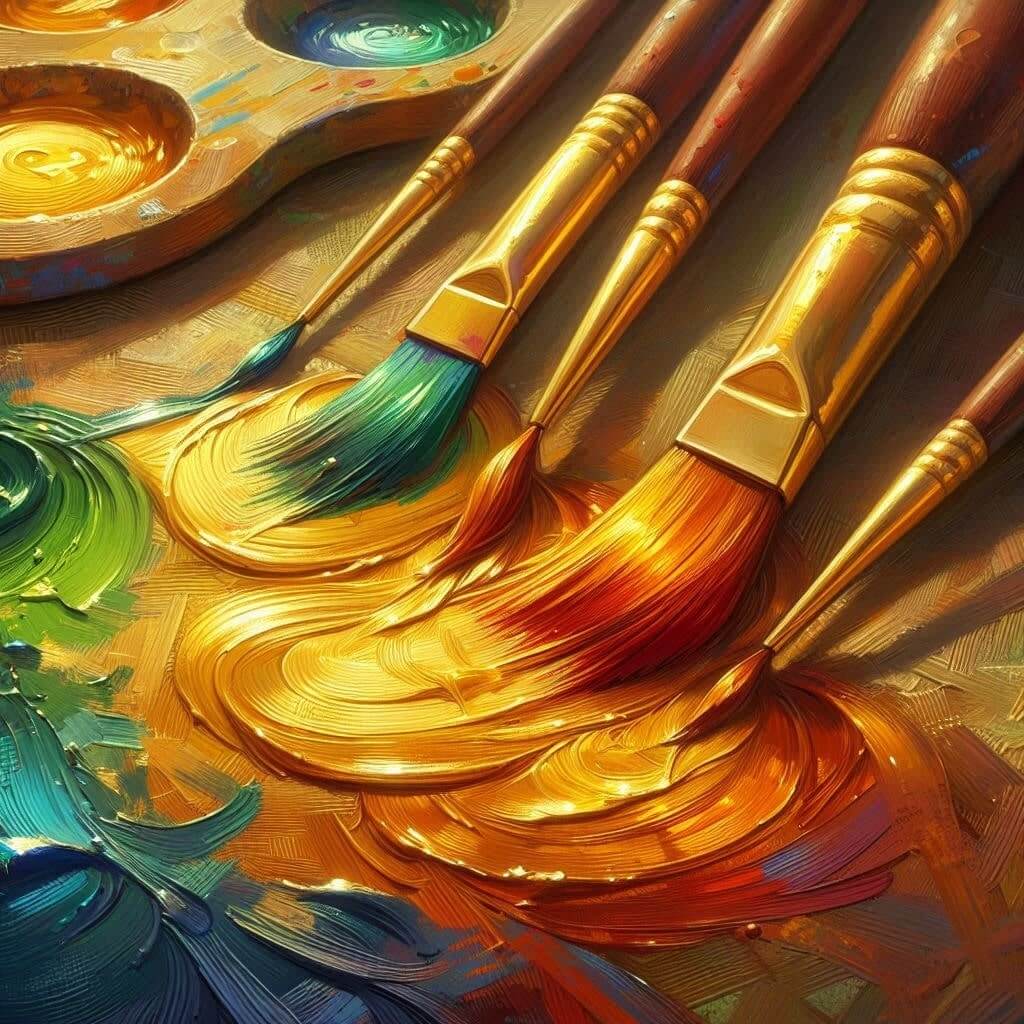In the vibrant world of digital design, few colors capture attention and evoke emotion quite like gold. From luxury branding to celebratory graphics, gold adds a touch of elegance and prestige. Its warm, metallic sheen has long been associated with wealth, achievement, and timeless beauty. But in the realm of pixels and screens, how do we recreate this illustrious hue? What are HEX and RGB for Gold?
The answer lies in the precise manipulation of light through the RGB color model. This digital alchemy transforms simple numeric values into a color that can elevate designs, convey luxury, and spark emotion.
As we delve into the specifics of gold’s RGB values, we’ll uncover not just its technical composition, but also its profound impact on design aesthetics and its versatility across various applications. Join us on this golden journey through the digital spectrum.
Introduction to Digital Gold
In digital color models, every hue is created through a combination of red, green, and blue light – the RGB color model. Gold, with its warm, metallic sheen, is no exception. The most common digital representation of gold is denoted by the hexadecimal code #FFD700. This code serves as a universal identifier for the color gold across various digital platforms and software. It’s a precise recipe that tells displays and printers exactly how much of each primary color to mix to achieve that perfect golden hue.
Understanding this code and the principles behind it is crucial for designers and digital artists who aim to harness the power of gold in their creations. Whether it’s for a luxury brand logo, a festive website banner, or a digital illustration, mastering the digital incarnation of gold opens up a world of creative possibilities.
Decoding the RGB Values for Gold

The RGB values for gold are:
- Red: 255 (100%)
- Green: 215 (84.3%)
- Blue: 0 (0%)
These numbers reveal that digital gold is composed of maximum red, a high amount of green, and no blue at all. This combination creates the warm, yellowish tone we associate with gold.
How RGB Creates the Golden Hue
To understand how these specific RGB values combine to create a distinct golden hue, let’s jump into the intricacies of how each color component contributes to the final appearance.
RGB Color Model Basics
The RGB color model is based on the additive mixing of light. Each color is created by combining different intensities of red, green, and blue light.
Value Range
Each primary color (red, green, blue) can have a value from 0 to 255, where 0 means none of that color and 255 means the maximum intensity. In the simple words, RGB for gold is 255, 215, 0
Hexadecimal Representation
The hex code #FFD700 for gold breaks down as follows:
- FF: Red component (255 in decimal)
- D7: Green component (215 in decimal)
- 00: Blue component (0 in decimal)
How These Values Create Gold
- Red at maximum (255): This provides the warm base of the color.
- Green at high level (215): This adds yellowness to the red, shifting it towards gold.
- Blue at zero (0): The absence of blue keeps the color warm and prevents it from becoming pale or cool-toned.
Percentage Representation
- Red: 255/255 = 100%
- Green: 215/255 ≈ 84.3%
- Blue: 0/255 = 0%
Color Mixing Logic
- Maximum red with high green creates a yellow-orange hue.
- The lack of blue maintains the color’s warmth and intensity.
- This specific balance of red and green, without blue, produces the golden hue.

Perceptual Basis
These values were likely determined through a combination of color theory, perceptual experiments, and industry standards to create a digital representation that closely matches our perception of metallic gold.
Gold across Color Spaces
While RGB is the standard for digital displays, other color models are used in various contexts:
CMYK (for printing)
This model translates gold from digital to print. Let’s see how the CMYK values achieve this.
- Cyan: 0%
- Magenta: 16%
- Yellow: 100%
- Black: 0%
HSL (Hue, Saturation, Lightness)
Here’s how gold’s hue, saturation, and lightness define its appearance. Next, we’ll explore these attributes:
- Hue: 50.6 degrees
- Saturation: 100%
- Lightness: 50%
HSV (Hue, Saturation, Value)
The HSV model offers a different view of gold. We’ll now examine how its hue, saturation, and value contribute to its color.
- Hue: 50.6 degrees
- Saturation: 100%
- Value: 100%
Shades of Digital Gold
Gold isn’t a one-size-fits-all color. Designers often use variations to achieve different effects.
Below are some common codes with their respective HEX and RGB for Gold:
Goldenrod:
- HEX: #daa520
- RGB: 218, 165, 32
Dark Goldenrod
- HEX: #b8860b
- RGB: 184, 134, 11
Old Gold
- HEX: #cfb53b
- RGB: 207, 181, 59
Light Gold
- HEX: #fddc5c
- RGB: 253, 220, 92
Golden Yellow
- HEX: #FFC000
- RGB: 255, 192, 0
The Psychology and Application of Gold in Design
Gold carries strong associations with luxury, success, achievement, and triumph. It’s often used to convey:
- Prestige and high-end appeal in luxury branding
- Celebratory feelings in award ceremonies and special events
- Wealth and prosperity in financial services branding
However, gold isn’t limited to formal or luxurious applications. When paired with the right colors, it can also appear friendly and playful, making it versatile for various design needs.
Harmonious Color Combinations
Gold pairs well with many colors, each combination creating a unique mood:
- Gold and black: A classic combination exuding luxury and sophistication
- Gold and green: Reminiscent of nature, creating a rich, organic feel
- Gold and blue: A regal combination often seen in heraldry and formal designs
- Gold and coral or seafoam green: Creating a more playful, modern aesthetic
Popular color schemes including gold are:
- Emerald Entrance: Combining gold with deep greens for a natural yet luxurious feel
- Retro Punch: Pairing gold with vibrant, contrasting colors for a bold, energetic look
Practical Considerations in Design
When using gold in digital design:
- Ensure sufficient contrast for text legibility
- Be mindful of overuse – gold is impactful but can be overwhelming in large amounts
- Consider how gold will translate to different media (e.g., print vs. digital)
In print design, techniques like foil stamping can enhance the metallic quality of gold, adding a tactile dimension to the visual impact.
In a Nutshell
Understanding the technical aspects of gold in digital color spaces allows designers to use this powerful hue effectively. As design trends evolve, gold continues to hold its place as a color of distinction and beauty. Whether used to convey luxury, celebrate achievement, or add a touch of warmth to a design, gold’s digital representation in RGB (255, 215, 0) ensures that this timeless color continues to shine in the digital age.
By mastering the use of gold in digital design, creators can harness its emotional and visual impact, crafting designs that are both beautiful and meaningful. As we look to the future, gold is likely to remain a key player in the designer’s palette, adapting to new trends while retaining its classic appeal.
Leave a Reply